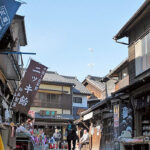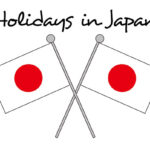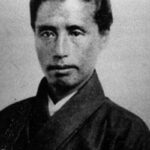Everything you need to know about traveling in Japan
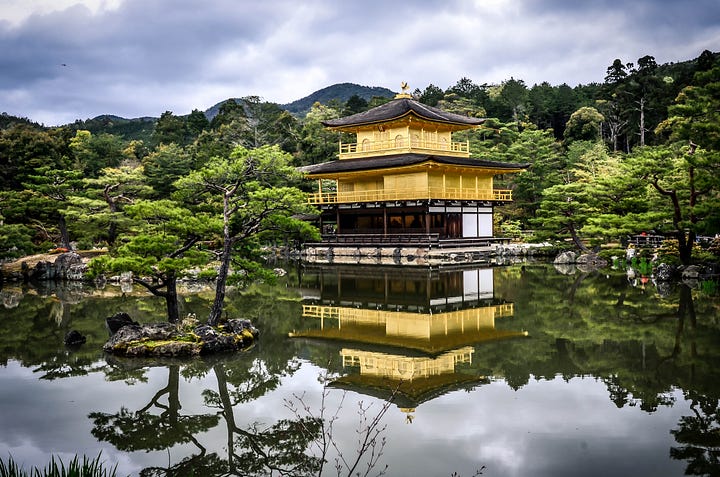
Starting Oct. 11, after nearly two and half years, tourists are being allowed back into Japan. Hurray!
As you’re planning your visit, here are the things you need to know to ensure a pleasant trip.
With the most extensive and efficient public transport system in the world, getting around Japan is easy. The weak yen means prices are extremely reasonable. And there are so many amazing things to do and see that it can be difficult to decide on an itinerary.
The biggest challenge traveling around Japan is the language gap. Even in hotels and sites frequented by tourists, English communication can be somewhat rudimentary. But with the tips below, you’ll have no trouble getting around.
Japan is the safest country in the world. There are no “bad areas” to stay away from. While I wouldn’t recommend that a woman walk alone through Shinjuku at 2 AM, I’d be shocked if she encountered any problems. There is the rare pickpocket, but you’re more likely to have a lost wallet returned than to have one stolen.
Here are the things you need to know for a safe and enjoyable trip.
General
1. Wear a mask: Even before the pandemic, masks were common in Japan to ward off germs and fight hay fever. While masks are no longer mandated when socially distanced and not talking, the vast majority of Japanese will be wearing a mask. People will feel more comfortable around you if you stay masked up in public.
2. Carry your passport: Japanese law requires all non-Japanese to carry a passport or immigration registration card at all times. If you’re ever stopped by the police, you’ll need to show it. Keep it with you just in case. And you can use it to get a VAT tax refund for purchases over 5000 yen from stores that offer tax rebates for tourists.
3. Wear comfortable shoes: Plan on walking. A lot. All day. Up and down stairs. Up and down hills. Leave the high heels and sandals at home and bring good walking shoes.
4. Head to the convenience stores for anything you need: Convenience stores like 7-Eleven, Lawson, and FamilyMart known as “conbini” are one of the gems of Japan (and nothing like the grubby 7-Elevens in America). There’s at least one on every corner. The food, especially the lunch bentos, are better than most restaurants outside Japan, and their nikuman (meat filled buns) are worth flying to Japan for. Onigiri rice balls make a great snack if you don’t have time for a meal. Fill up on all your needs at the conbini, from drinks and snacks, to batteries and chargers, to socks and umbrellas.
5. Head to the 100 yen shops for great little gifts: Daiso, Can Do, and other 100 yen shops offer a wide variety of household goods at incredible prices. You’ll find so many cute things that make great gifts for $1 each that you’ll want to take home everything. The Don Quijote chain (known as Donki) is even bigger and better with a wide variety of goods at discount prices.
6. Carry cash: Credit cards and electronic payments are not accepted everywhere, so you’ll need to carry cash. You can get cash from ATM machines at good exchange rates.
7. No negotiating prices: The marked prices are the prices, no negotiations.
8. No tipping: The marked prices are the prices. No tips in restaurants, no tips for taxi drivers, no tips in hotels. You won’t believe how much simpler that makes everything.
9. Coffee shops for free wi-fi: Coffee shops and fast food chains like Starbucks, Doutor, and McDonald’s are your free wi-fi savior. JR offers free wi-fi at some train stations and aboard the shinkansen and Narita Express, but I’ve not been able to get it to work. If you plan to upload lots of photos while traveling or want to facetime your family from the top of Mt. Fuji, consider getting a pocket wifi (wi-fi egg) to carry with you. This is the provider I use.
10. Bidet toilets: Most toilets in Japan, including your hotel room, are bidet toilets that clean your butt with a jet of water. They’re wonderful, but take a little getting used to. There’s usually a button with a drawing of a jet of water shooting upwards. That’s the clean button. Most toilets will flush automatically when you stand up, but if not, you’ll have to hunt around for the flush button.
11. Museums closed on Mondays: Most, though not all, museums are open over the weekend and closed on Mondays. Plan your itinerary accordingly.
12. Be flexible: The weather in Japan is highly variable. Fall is a great season to visit, especially areas famous for autumn leaves, but rain is not uncommon. Carry a foldable umbrella with you. If you get caught without one, you can pick up a disposable umbrella at the convenience store.
Getting Around
13. Use public transport: You can get just about everywhere in the major metropolitan areas of Japan with a combination of train, subway, and buses, plus the occasional taxi if you’re carrying a lot of bags or tired of walking. Unless you’re heading into the countryside, there’s no need for a rental car which is outrageously expensive to rent and operate.
14. Get a transport fare IC card: Pick up a prepaid rechargeable fare card to get around on public transport. There are different fare cards in different parts of the country (Suica, Icoca, Pasmo) but all can be used pretty much throughout of the country.
15. Buy rail passes: If you’re traveling to multiple places around a city, a 1-day transit pass can be a lot cheaper than paying individual fares. For example, Kyoto has a 1 day bus pass for 700 yen and a 1 day bus + subway pass for 1100 yen that’s a great deal for getting around the tourist attractions of the city.
If you’re traveling around the country, consider buying a Japan Rail Pass. Note that with the pass, you can’t use the fastest shinkansen, and it’s only valid on JR trains which doesn’t include local trains, subways, and buses, so you need to look at your itinerary to determine if it’s worth the cost.
16. Women-only rail cars: During crowded rush hour, many trains have a car that is marked “women only” (josei senyō sharyō). If you’re not a woman, you’re not allowed in.
17. Google rocks: Google Maps is great for getting around. Google Translate is shockingly good for simple questions or translating signs in Japanese.
18. Ask for assistance if you need it: In general, Japanese won’t approach strangers. However, if you’re lost or have questions, people will go out of their way to assist if you ask for help. The police are quite friendly to point you in the right direction (there’s a police stand near most major stations) and rail employees can help make sure you get on the right train. Speak slowly and if possible, write down what you’re looking for. It is far easier to understand something written than spoken.
19. Stay at an onsen hot springs resort: The best part of a trip to Japan is a visit to the hot springs. Stay overnight at a ryokan and enjoy the best meal of your life. The hot springs are mostly away from the cities, usually in the mountains, but worth the trip. Hakone, Nikko, Nagano, Atami, and Yuzawa are all easy train rides from Tokyo.
Dining
20. Small specialty restaurants: Japan has millions of small restaurants. Many have been run by the same family for decades. A typical restaurant has seating for less than 25 people and specializes in one thing. If you want sushi, you go to a sushi restaurant. If you want ramen, you go to a ramen joint. If you want udon or soba noodles instead, look for an udon or soba restaurant. There are restaurants for curry, cutlets, tempura, unagi, and everything else. I guarantee every restaurant, without exception, will be wonderful.
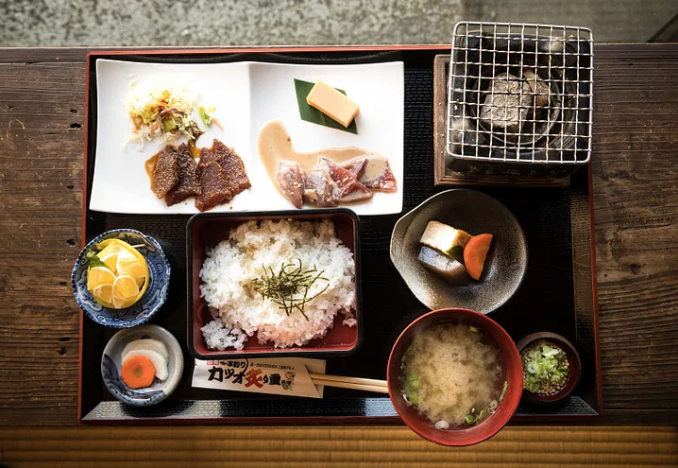
21. Set menus: Most restaurants will have a few set menus and a few ala carte choices. The set menu will typically be a main dish, rice, miso soup, pickles, and a few veggies or a small salad. There are no substitutions.
22. Food sample window: You don’t need to read a Japanese menu to order. Just point to what you want from the samples in the window, which will also show the price. Easy.
23. Skip Yelp! and TripAdvisor. There are millions of small specialty restaurants and all are equally 5 stars. It’s hard to find a bad meal and you’ll never find surly service anywhere. Walk around, look at the samples in the window, and pick the place that looks the most appealing. Other than Michelin-stared restaurants, reservations are rarely required or even accepted.
24. Vegetarian and vegan can be hard to find: Japanese cuisine is not heavy in meats, but it can be hard to find dishes that have no meat or fish at all. If you’re a vegan, look around for sites that list restaurants that cater to vegetarians and vegans. While visiting Japan, my vegetarian sister found it easiest to eat at Indian and Thai restaurants.
25. Don’t miss the department stores: The basement of the department stores, called depachika, is another gem of Japan with dozens of individual take-out food shops. You can find everything here, from baked goods to sweets to fish and meats. Many of the counters offer small samples, making a great way to try everything. Most also have a liquor store with excellent beers, wines, and sakes from all over the country. If you’re looking for a regular meal, the top of most department stores is filled with sit down restaurants.
Now you’re ready to travel to Japan. Have a great trip!
Special thanks to Yuko Tamura and Alvin T. for their review and corrections.
・・・
If you enjoy my articles, you’ll love my novel of Japanese culture in Silicon Valley. To Kill a Unicorn is the story of a Japanese-American in Silicon Valley (which was originally a Japanese farming community) who uses tea ceremony, sake, and Japanese whiskey (a bit too much) to find his missing friend. Pre-order your copy now!
.
『Learn Japan Deeply with DC!』
Writer: DC Palter
Read DC’s Stories More at Japonica Publication ( medium.com/japonica-publication )
(2/16/2023)
.
.

